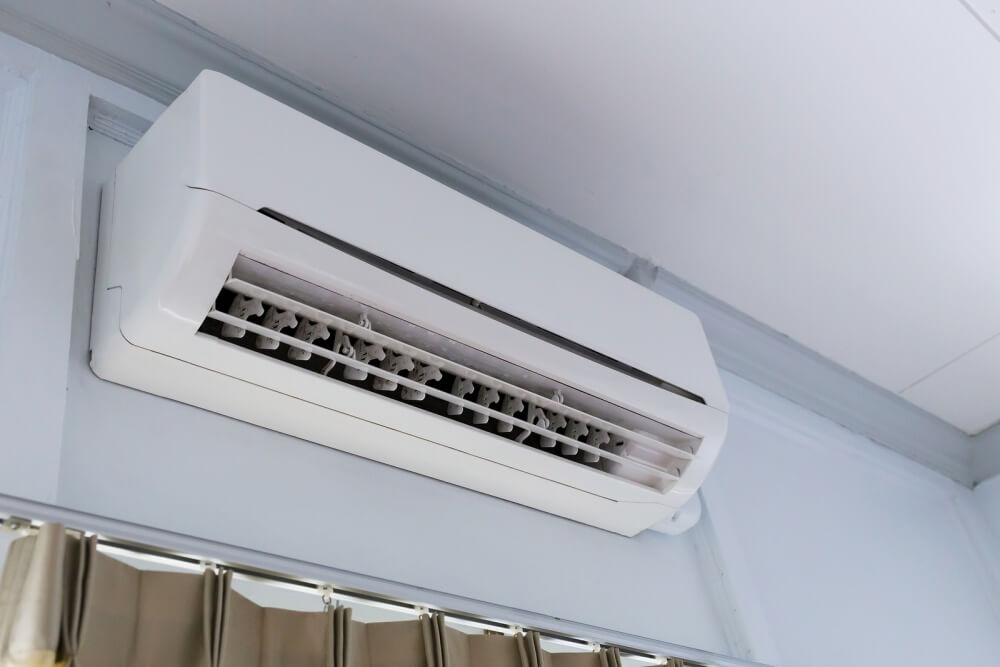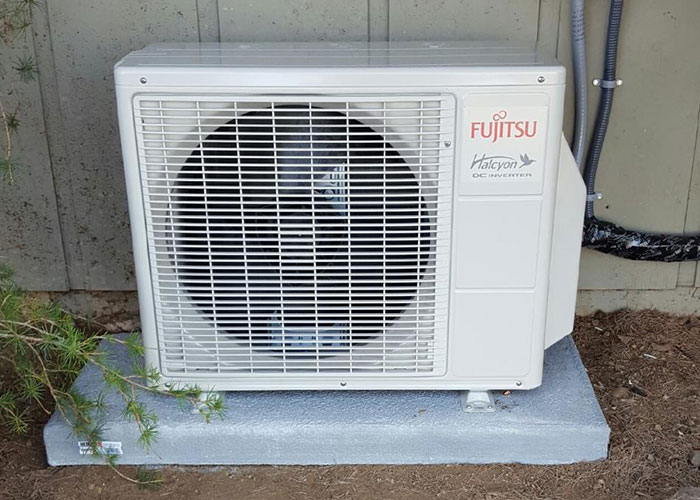7 Types of Air Conditioners: How To Choose What’s Best for Your Home
Choosing the Right AC System for Your Home
Choosing an air conditioning system for your home or office can be a daunting task. There are many different types of air conditioners, and each has their pros and cons. This guide will help you understand the basic differences between each type of air conditioner, and help you decide which is the best choice for your home.
1. Central Air Conditioners
More than half the homes in the United States have central heating and air. In a central air conditioning system, warm or cool air is distributed to each room through ductwork – a series of metal conduits or pipes. Air is circulated through supply and return air ducts and registers.
The components that all central air conditioners have: an outside condenser/compressor unit, and an indoor air-handling unit with a blower, evaporator coils, and a system for exchanging hot indoor air with chilled air.
During the summer, warm air flows into the central air conditioner. Thermal heat energy is absorbed in the evaporator coil via refrigerant, which can turn from liquid to a gas, depending on if it is absorbing or releasing heat. The refrigerant moves to the outside units, where it is dispersed into the outdoor environment by the condenser/ compressor. Cooled air is pushed through the ductwork into the rooms of the home.
The condenser/ compressor usually sits on a concrete slab outside, though sometimes, it is mounted on the roof. One thing that central air also does is remove humidity from the indoor air to make it feel more comfortable.
Central air conditioning pushes cool air to all rooms connected to the network of ducts located in the walls, ceiling, or floor. Return ducts and air registers continue the cycle of removing warm air and pushing cool air through the home. In hot, humid climates, central air conditioning provides the most stable cooling experience.
If you want to read further on how central air works, and what you should look for when buying a central air system, read our Central Air Conditioner Buying Guide.


2. Ductless Split System Air Conditioners
A ductless split system (sometimes known as a mini-split) is similar to central air conditioning in that it has some of the same components, and moves heat from one environment to another. The compressor is installed outdoors and separate air handlers are installed indoors. Each air handler (containing an evaporator) is connected to the outdoor compressor unit with a refrigerant line, drainage tubes, and power cables. Instead of needed a large area for ductwork, mini-splits only require a small hole about three or four inches in diameter to mount the units.
Split systems can save a significant amount of energy vs central air because there is no ductwork, so less heat/cold is lost. Mini-splits are mostly used on older homes where adding ductwork is not desirable or against code, in smaller floor plans, or in homes where zoned heating and cooling is wanted.
Each ductless split system can have up to four “zones” or rooms where an indoor unit is mounted. These act as a replacement for air duct vents. For each room where an air handling unit is placed, there is a thermostat for that room. This allows for each room to have a distinct temperature, instead of the temperature being the same throughout each room.
3. Heat Pumps
A heat pump is a split system heating and cooling unit that transfers thermal heat energy from one environment to another. In the summer, a heat pump moves heat from inside your home to outside. During the colder months, a heat pump extracts heat energy from the outside air (or ground or water, with geothermal heat pumps) and moves it inside your home. Central HVAC usually has an air conditioner and furnace for cooling and heating, respectively. A heat pump differs in that it can provide both heating and cooling. There are two main types of heat pumps:
- Air source heat pumps – These extract heat from the outside air during winter. No matter how cold it is outside, there is some thermal heat in the air. This is used to heat the home. During summer, heat from your home is moved from indoors, and dispersed to the outside air.
- Geothermal heat pumps – These extract heat from the ground or a nearby water source to heat your home or disperse heat into the outside environment during the cooling cycle. Geothermal heat pumps usually work best on larger lots, which gives the heat extraction pipes more area to draw heat from. These have a larger initial investment than central AC, but can last a lifetime.
4. Swamp Coolers
Also known as evaporative coolers, swamp coolers, cool rooms in a different way than central or ductless air conditioners. Swamp coolers do not use refrigerant to extract heat or cool air. Instead, they use damp pads which use evaporation to lower the temperature of the circulated air.
Warm air flows over the damp pads, and the air is cooled. A major difference between central cooling and swamp coolers is that central air removes humidity from the air, and swamp coolers add humidity to the air.
One limitation to swamp coolers is that they work best in hot, dry climates. In humid climates, like Florida, they are impractical.
Some upsides to swamp coolers are decreased energy use and less carbon emissions. In evaporative coolers, the only thing the electricity is running is the fan, and occasionally a water pump used to fill the basin with the damp pads.
Swamp coolers do not use refrigerant (Freon) and do not emit carbon dioxide. This helps prevent greenhouse gas emissions.
5. Window AC Units
These are units meant for small spaces or cooling a single room. As the name suggests, they are mounted in the open space of a window. These contain some of the same basic components as a central AC system, but at a much smaller scale: compressor, evaporator coils, refrigerant, and fan. A window AC unit blows hot air out the back to the outside and pushes cool air inside the room.
6. Portable AC Unit
The portable AC units are similar to a window AC unit – they are meant to only cool one room. They are self-contained “unitary” cooling units that can be moved from room to room. They contain a condenser and evaporator coil. A flexible exhaust duct is attached to the window using a mounting kit (usually included with the portable unit), and warm air is vented out.
Portable AC units are ineffective in rooms of more than 500 square feet. They are usually used as a last resort where building regulations prevent the use of a window AC unit. Portable AC machines are usually noisier than window units.
7. Package Terminal Air Conditioners
This type of air conditioning system (PTAC) is usually found in hotels, medical facilities, apartments, and assisted living facilities. Package Terminal Air Conditioners are usually used to cool one room.
If you’ve stayed in a hotel room before, chances are you’ve seen a PTAC. They are often installed right above the floor and below the window. On the other side of the wall, outside your room, the PTAC has an exhaust system sending warm air outside the building.
PTACs send refrigerant through a compressor, cooling the air, which is then redirected back into the room being cooled. Interestingly, PTACs are ductless units, making them easier to install than central air. They can also heat rooms as well as cooling them.
Though this is not common, these can also be used in residential situations. If you’ve built a new room addition, and it is not connected to your existing ductwork, a PTAC may make sense.
Get a Free Estimate
Our HVAC technicians at Ventwerx HVAC Heating & Air Conditioning are here to help if your heating and cooling system is operating unusually. Give us a call at 408-422-2987 in San Jose or at 408-710-9595 in Morgan Hill for a free estimate.